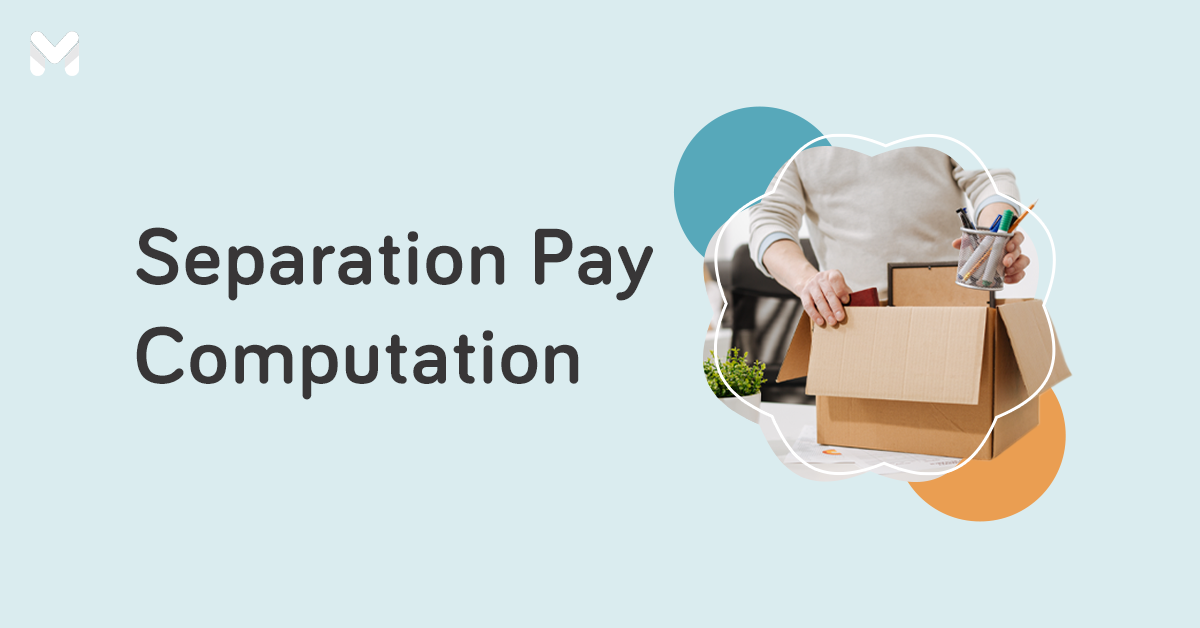Some jobs are naturally riskier than others. Doctors, nurses, firefighters, policemen, soldiers, and others in hazardous work environments put their life on the line while fulfilling their duties. If your line of work involves some risk, you deserve proper compensation through hazard pay.
Don't understand how hazard pay in the Philippines work? Here's a complete guide for employees entitled to this benefit.
What is Hazard Pay in the Philippines?

Hazard pay, also called hazard allowance or hazardous duty pay, is compensation paid in addition to regular salary to workers who perform hazardous duties or whose work involves physical hardships. This is based on the Department of Budget and Management's (DBM) definition of hazard pay[1].
In simpler terms, hazard pay is the amount you'll receive from your employer on top of your basic salary if the nature of your work involves a high risk of getting an illness or injury or losing a life.
Examples of work conditions that merit a hazard allowance include war zones, healthcare facilities, construction sites, mines, and chemical plants.
Hazard pay in the Philippines is given to qualified employees either as a fixed monthly rate or as a percentage of the monthly basic salary.
Who is Entitled to Hazard Pay?
Not all employees are eligible for hazard pay, apparently because not everyone is exposed to hazardous work conditions. Hazard pay laws and presidential directives in the Philippines define certain types of government workers who should receive this allowance.
Government Employees
Administrative Order 26[2] issued by President Rodrigo Duterte on March 2020 grants COVID-19 hazard pay to government personnel authorized to physically come to work in areas under enhanced community quarantine (ECQ) or modified ECQ (MECQ).
According to the Civil Service Commission, government personnel working from home will not receive hazard pay.
Government workers in regular, contractual, casual, contract of service, and job order positions are entitled to the COVID-19 hazard pay if they work in any of the following offices:
- National government agencies
- State universities and colleges
- Government-owned and controlled corporations
- Senate
- House of Representatives
- Judiciary
- Office of the Ombudsman
- Other independent constitutional bodies
- Local government units (depending on the LGU's financial capability)
- Local water districts
Public Health Workers

Under the Magna Carta of Public Health Workers (Republic Act 7305)[3], government health workers who are exposed to "great danger, contagion, radiation, volcanic activity/eruption, or occupational risks or perils to life" should receive hazard allowance.
Among the hazardous areas and circumstances for public health workers identified by RA 7305 are the following:
- Areas declared under a state of calamity or emergency
- Exposure or contact with patients with contagious and communicable diseases
- Mental hospitals and prison camps
- Radiation-exposed clinics and laboratories
- Chemical and medical laboratories where infectious specimens are handled
- Highly disease-infected areas
- Drug abuse drop-in centers or rehabilitation centers
Public Social Workers
The Magna Carta for Public Social Workers (Republic Act 9433)[4] mandates hazard pay for public social workers (PSWs) and public social welfare and development workers (PSWDWs) deployed in the following hazardous locations and circumstances:
- Remote or depressed areas
- Strife-torn or embattled areas
- Distressed or isolated stations
- Mental hospitals
- Leprosaria
- Areas declared under a state of calamity or emergency
- Occupational risks such as child labor cases, drug dependents, mentally ill patients, and those with contagious diseases
PSWs include registered social workers who work in the government, while PSWDWs are those working in government social welfare and development agencies other than PSWs.
Military and Uniformed Personnel

Enforcing the law, maintaining public order, and defending the country's territories are naturally hazardous occupations. This is why police officers, soldiers, and other military and uniformed personnel in the Philippines in the following entities are given hazard pay.
- Bureau of Corrections
- Department of National Defense
- Armed Forces of the Philippines
- Bureau of Jail Management and Penology
- Philippine Coast Guard
- Philippine National Police
- Bureau of Fire Protection
- National Mapping and Resource Information Authority
Science and Technology Personnel

Scientists, engineers, researchers, technicians, and other employees of the Department of Science and Technology (DOST) are entitled to hazard allowance as one of their benefits under the Magna Carta for Scientists, Engineers, Researchers, and Other S & T Personnel in the Government (Republic Act 8439)[5].
Full-time and part-time S&T personnel with plantilla, casual, contractual, or emergency position are covered by this government-mandated benefit.
Specifically, science and technology personnel receive hazard pay when assigned in any of the following hazardous workplaces:
High-risk hazards:
- Radiation-exposed laboratories and service workshops
- Remote or depressed areas
- Strife-torn or embattled areas
- Areas declared under a state of calamity or emergency
- Natural danger zones
Low-risk hazards:
- Drug rehabilitation centers
- Prison camps
- Mental health centers
- Frequent interaction with employees working in the laboratory or highly hazardous areas
Hazard Pay Philippines Guidelines
COVID-19 Hazard Pay Guidelines for Government Employees

COVID-19 Hazard Pay Computation
The maximum daily rate for COVID-19 hazard pay per government employee is PHP 500. The total amount you'll receive is computed based on how many days you came to work during the ECQ and MECQ periods.
Here is the formula for computing the COVID-19 hazard pay of qualified government employees in the Philippines:
COVID-19 Hazard Pay = PHP 500 x Number of days an employee physically reported for work during ECQ and MECQ
One working day is equivalent to a maximum of eight working hours. The COVID-19 hazard pay rate is pro-rated or adjusted proportionately for workers in government hospitals with 12-hour or 24-hour shifts as well as part-time employees.
Sample Hazard Pay Computation:
For a government employee who has worked for 20 days during ECQ and MECQ, here's how to compute the COVID-19 hazard pay:
PHP 500 x 20 = PHP 10,000
COVID-19 Hazard Pay Rules
- Retroactive application. AO 26 took effect on March 17, 2020 but was issued six days later. If you're entitled to receive COVID-19 hazard pay, the computation of your benefit should start from the effectivity date of AO 26.
- No double compensation. COVID-19 hazard pay is not given on top of the existing hazard pay of government employees, as paying double benefits is not allowed in the government. This means workers already receiving regular hazard pay may receive the COVID-19 hazard pay if it's higher than what they're currently getting paid under the applicable hazard pay law in the Philippines.
- Paid during ECQ and MECQ only. Payment of the hazard allowance will end once the area shifts to general community quarantine (GCQ) or modified GCQ (MGCQ).
Hazard Pay Guidelines for Public Health Workers

Hazard Pay Computation for Public Health Workers
Public health workers (PHWs) in the Philippines receive a hazard allowance of at least 25% (salary grade 19 and below) or at least 5% (salary grade 20 and above) of their monthly basic salary.
Specifically, here are the PHW hazard pay rates:
| Salary Grade | Hazard Pay Rate |
|---|---|
| 19 and below | 25% |
| 20 | 15% |
| 21 | 13% |
| 22 | 12% |
| 23 | 11% |
| 24 and 25 | 10% |
| 26 | 9% |
| 27 | 8% |
| 28 | 7% |
| 29 and 30 | 6% |
| 31 | 5% |
PHW Hazard Pay = Hazard pay % (based on salary grade) x Monthly basic salaryHere is the formula for computing the hazard pay of PHWs:
Sample Hazard Pay Computation:
For an entry-level nurse in a public hospital with a monthly basic salary of PHP 32,053 (salary grade 15), the hazard pay computation is as follows:
0.25 x PHP 32,053 = PHP 8,013.25
COVID-19 Hazard Pay Rules for Public Health Workers
Part-time PHWs should be paid half the amount of hazard pay received by full-time PHWs. PHWs who are on paid or unpaid leave (sick leave, vacation leave, maternity leave, etc.) or full-time attendance in a training or seminar for at least 11 working days in a month are not entitled to hazard pay.
Hazard Pay Guidelines for Public Social Workers

Hazard pay for public social workers (PSWs) is equivalent to at least 20% of their monthly basic salary.
Here's the formula for computing the hazard allowance of PSWs:
PSW hazard pay = [(Monthly basic salary ÷ 22 days) x 20%] x Number of days of actual exposure to hazard
Sample Hazard Pay Computation:
For a social welfare officer with a monthly basic salary of PHP 32,053 who have worked under hazardous conditions for 10 days in a month, here's how to compute the PSW hazard pay:
[(PHP 32,053 ÷ 22 days) x 0.20] x 10 days of exposure = PHP 2,913.91Hazard Pay Guidelines for Military and Uniformed Personnel

The amount of hazard pay for all soldiers, police officers, and other military and uniformed personnel is fixed at PHP 540 per month[6] regardless of salary, risk level, and actual exposure.
Hazard Pay Guidelines for Science and Technology Personnel
Science and technology employees in the Philippines are paid hazard allowances ranging from 10% to 30% of their monthly basic salary depending on the nature and extent of the hazard involved in their job.
Here are the hazard allowance rates for S&T personnel in the Philippines:
| Actual Exposure | High Risk | Low Risk |
|---|---|---|
| 15 days or more | 30% | 15% |
| 8 to 14 days | 23% | 12% |
| 7 days or less | 15% | 10% |
And here's the formula for computing the hazard allowance of S&T workers:
S&T hazard pay = Hazard pay % (based on actual exposure and risk level) x Monthly basic salary
Sample Hazard Pay Computation:
For an associate scientist with a monthly basic salary of PHP 96,985 who have worked in an area declared under a state of calamity (high risk) for 7 days, here's how to compute for the hazard allowance:
0.15 x PHP 96,985 = PHP 14,547.75
Hazard Pay Philippines FAQs

1. Is hazard pay mandatory in the Philippines?
Hazard pay is not mandatory for all workers in the Philippines. This benefit is required only for certain government personnel whose work involves some risk under applicable laws and directives.
2. Is hazard pay required for private employees in the Philippines?
No. Hazard pay is not among the required benefits for employees in the private sector under the Labor Code of the Philippines. Currently, there's no law that makes giving hazard pay compulsory for employers.
The Department of Labor and Employment (DOLE) is only recommending—rather than requiring—hazard pay for private sector workers, especially medical frontliners in private hospitals.
Likewise, AO 26 encourages private healthcare facilities to give hazard pay to their health workers exposed to the risk of COVID-19 transmission.
Also, private employees in the Philippines may receive hazard pay either at the discretion of their employers or through collective bargaining with a union. Such is the case especially for workers whose responsibilities involve a high level of risk and those whose protective gear (like helmet, PPE, face mask, safety glasses, etc.) is not enough to lessen the hazard.
If a company grants a hazard allowance, the employer and not the government determines the amount of compensation and payment guidelines.
2. Is hazard pay taxable in the Philippines?
The hazard pay of minimum wage earners is income tax-exempt, along with other benefits such as overtime pay, holiday pay, and night shift differential. Also, the hazard pay of medical frontliners in public and private healthcare facilities is exempt from income tax under the Bayanihan to Recover as One Act[7].
If your salary is beyond the minimum wage and you're not a frontline healthcare worker, your hazard pay is taxable regardless of the level of risk of your job.
Read more related articles:
Final Thoughts
Knowing the guidelines through this hazard pay Philippines guide ensures you receive the benefits you're entitled to. Whether you're a government or private employee, it pays to know the policies that come with your employment. Check with your HR representative about hazard pay.
Sources:
- [1] DBM and DSWD Joint Circular No. 1 Series of 2018
- [2] Administrative Order No. 26 (Official Gazette)
- [3] Republic Act 7305 (Official Gazette)
- [4] Republic Act 9433 (National Council on Disability Affairs website)
- [5] Republic Act 8439 (DOST website)
- [6] Congress Joint Resolution No. 1 Series of 2018 (Official Gazette)
- [7] BIR Revenue Regulations No. 29-2020










